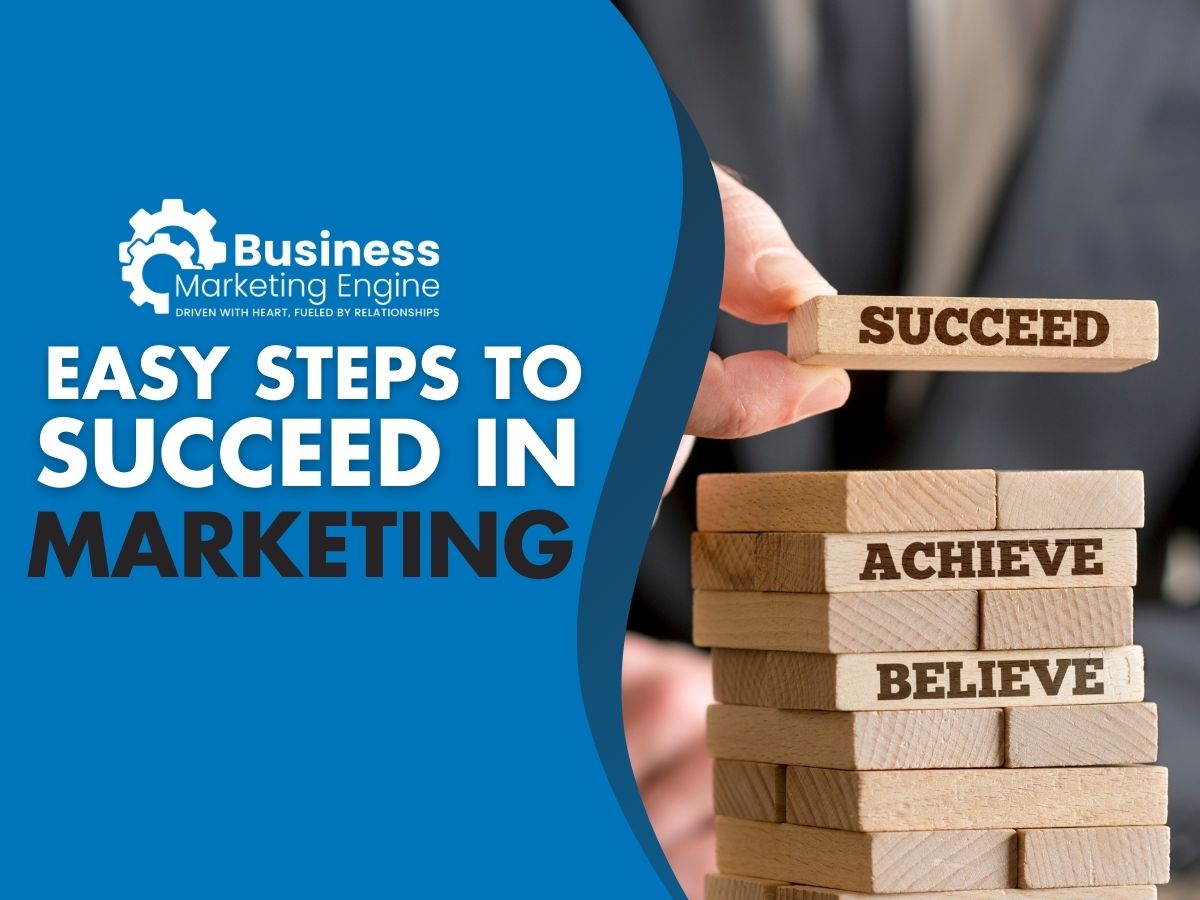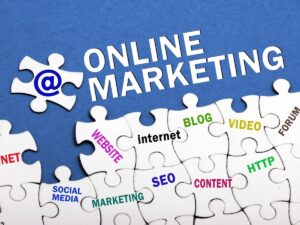Today, we return to the end-all, be-all of long-term business success and growth. Need we even remind you? Marketing.
But you knew that, didn’t you? If you did not, don’t find yourself worrying quite yet.
Your marketing strategy is more than a half-hearted attempt at content marketing or a few clumsy advertising plans. Those things matter, yes. But think of that word: strategy.
How do you strategize your marketing plan? How do you plan at all? How do you go about creating a marketing plan to address all the many facets of your business’s potential?
Come on, you know this. You come to us. Your search for expert advice and in-depth guides to marketing planning. From your research, you build a marketing plan template that identifies who your target market is. Your marketing plan template pinpoints how to reach them and how to keep them coming back for more.
Again, we are here to help you build it, leading you to a bountiful pool of customers and professional success that will last. Let’s talk about how to create a marketing plan template.
 What is a Marketing Plan?
What is a Marketing Plan?
“Woah, woah, woah,” you might be thinking. “Slow down. How do I build a marketing plan template if I don’t know what a marketing plan is to begin with? I’m new here!”
We hear you. The best place to start is at the beginning.
A marketing plan is an operational document. It details your advertising strategy, company-wide. Once you create it, you put it into effect to generate leads by reaching your target audience.
It serves as your roadmap, guiding you through the campaigns you need to roll out over a particular period of time. Your marketing plan is measurable in and of itself. It also tells you how you will measure the effectiveness of all your singular marketing initiative efforts.
It connects closely to your marketing strategy, a word you hear business professionals tossing in with “marketing plan” interchangeably. It makes sense to cluster the two terms together. You develop your plan with your all-encompassing and strategic framework in mind.
But think of your strategy as the big-picture outline. Your marketing plan, though, takes a step-by-step look at all your marketing-centric activities over the course of a particular time frame.
All in all, it is your brand’s overarching marketing strategy. With a quality marketing plan template, you will touch on every piece of that strategy. But it highlights four functions in particular:
- Market research. How will you support the prices you choose? How will you support new entries into the marketplace?
- Promotional platforms. What platforms will you use to promote your products and services? What mix of digital, print and radio platforms will you cultivate?
- Messaging. What is the demographic you want to appeal to? Which details about them are crucial? How will you customize your brand messaging to target these audiences?
- Metrics. Which metrics will you use to measure your results? How will you know you are delivering your marketing efforts on time and effectively?
We know this is a lot to unpack. The best way to unpack it? To take it on right away, diving in headfirst. It is time to get into your marketing plan outline and the key elements you need for your marketing plan template.
How Do You Write a Marketing Plan?
Let’s get creative together. After all, you are here to create your marketing plan template.
First, understand that your marketing plan highlights your organization’s value proposition. What might that be, you ask?
Your value proposition is the promise you make to your customers. It is the value that you guarantee to deliver to them. Think of it as your brand’s mission statement that customers run into, time and again, on your website or marketing materials.
On a grand scale, how does your brand offer solutions for your customers’ problems? Now break it down. How do those solutions (in the form of products or services) help achieve customer goals? In which ways do you turn your products’ or services’ features into benefits? Why are you better than your competitors?
This is the first thing to keep in mind when you create your marketing plan. Base your plan on your value proposition.
But after that, you need to write your actual plan. The best practice here is to create your marketing plan template. As we mentioned above, this includes market research before you make major marketing decisions.
We are about to take you through the marketing plan steps, one by one. But we have one other key takeaway before you begin: no detail is too small.
You must include the reasons why you are making these major decisions. You must lay out the timing to implement each one. You must add the metrics you will use to analyze the results and whether or not they are working.
Trust in that advice: you will thank us later.
What Are the Key Elements Needed in a Marketing Plan Template?
Do you want customers that just keep coming? Do you want clients that stay on with your company throughout its lifespan? Do you want to drive revenue, increase profit margins and foster a brand that becomes a household name?
Believe it or not, those questions are not from the script of a shoddy car dealership advertisement. We do not ask them of you with the voice of a QVC personality.
Align your marketing plan template with the following 11 sections. Look at them as marketing plan steps to take. Then, it will not be a matter of “believing us” or not. The results that will come from your next marketing campaigns and activities will speak for themselves.
The Executive Summary
We go into your marketing plan executive summary first. But you want to complete it last.
This may sound counterintuitive. In reality, though, we do need to talk about it at the beginning. This is because you should think about it as you go through each following section of your plan.
Your executive summary is exactly what it sounds like. It is its own section that summarizes every other section in your marketing plan. So reflect on it as you finish up each one to make sure you can draw an accurate picture of them at the end of your document.
This part is an overview. It does not waste any of your or your other relevant parties’ time. Instead, it offers a quick glance at your document’s important information. If they need more details on a certain section, they know where to look to find those details.
Some of those “relevant parties” include internal employees, financial advisors, investors and more.
 Your Target Customers
Your Target Customers
Sure, you want customers. You need customers, or else you will not sell anything that you offer. But who are your customers? What do you know about your ideal buyers?
If your answer to that is “Not much,” you need to rethink your research methods. Your answer should be “Everything. I know everything there is to know about my target market.”
In this section, describe the customers you want to target. Do so in detail.
There are three areas to detail here.
First, your target audience’s demographic profile. This includes information like their:
- Age range
- Income level
- Marital status
- Gender
Second, their psychographic profile. This will include their:
- Personality type
- Lifestyle choices
- Habits
- Interests and hobbies
- Past purchasing behaviors or patterns
Third, their behavioral profiles, like their:
- Desires for products and services/how your products and services will measure up to those desires
- Pricing preferences
- History of brand loyalty
Get a clear vision of your target customers and their vision. Then, your company can act as the glasses that focus their vision on your brand and what it has to offer them. You will end up with a higher ROI on your advertising and marketing efforts. Plus, you will find yourself with more long-standing customers than initial prospects.
Your Pricing and Positioning Strategy
You need a solid pricing and positioning strategy. Before you figure that out, figure out what your unique selling proposition (or USP) is. They all come together for your strategy’s final product.
Your USP is how you stand apart from your industry rivals. It could be a tagline that merges the areas where your business excels and what your customers want and need. No matter how you make your USP shine bright, it has to shine bright just the same.
Now, you have to align your pricing and positioning strategies.
Your pricing strategy goes over the processes you take to assign prices to your products and services. Let’s say that you run a business that sells luxury goods, like sports cars or designer handbags. In this example, you do not want to set low prices on either one. If you do, your ideal and top-of-the-line customers will not want to buy from you.
Your positioning strategy leaves you with one goal. You want to imprint one defining trait of your brand in your customer’s mind. How do you want your target market to think of your company when they are deciding between you and the other guy?
So again, align the two in this step. How do you want to position your products and how will you go about it? Ensure that your pricing strategy reinforces the positioning that you want. If you do not align the two, your next marketing presentation will not go the way you wanted it to.
Your Distribution Plan
This step is imperative. You have your target customers, you know how to tackle and align your pricing and positioning strategies. Your distribution plan takes care of how your customers will buy your products or services.
There are several things to consider when you draft this section.
Will you have distributors? Do your customers have the choice to buy what you are offering them from other retailers? Are they only able to buy from you if they do so directly from your business’s site? Have you thought about a mix of any of those options? The possibilities here are endless.
This section is where you really start to get into the specifics of how you will reach your market. Outline the various ways you could distribute your products or services to consumers. Be sure to include all possibilities here.
Your Offers
Offers are a prime example of how you can heighten interest and build intrigue for your audience.
They are the one-of-a-kind, exclusive deals that you and your marketing team come up with. Offers allow you to bring in new customers and retain existing ones.
No, you do not need to have offers for your market. You do not need dessert either, but dinner sure is a lot more exciting when you have it. A restaurant with an enticing dessert menu, on average, welcomes in a lot more customers. Plus, this restaurant cashes in on much higher average checks than a restaurant without.
Here are some examples of offers you might want to delve into in this section of your marketing plan template:
- Free trials
- Complimentary gifts with a purchase over $X
- Site-wide promotions
- Birthday or special-occasion coupons
- Money-back guarantees
- Bundle discounts (like a cheaper price when customers buy several things at once instead of if they did so individually)
Your Promotions Section
A promotion! How exciting. Do you know what’s even more exciting? Your business at the frontline of your industry, reaching more customers than ever before.
Here, you want to hit all the marks for reaching new ones by detailing your specific promotional tactics. And there are a lot of them to pick from. You could use:
- Contests
- Press releases
- TV ads
- Billboards
- Social media posts
- Product giveaways
- Event and trade-show marketing
- Supporting a cause
- Customer events
- Surveys
- And so many more
Research all of them to see what works best for your brand. You might want to use a mix of a couple or a mix of several. But most importantly, research them to see what works best for your customers. What do they react well to? What have they leaned towards in the past?
If you have a lot of new customers, check out where you can put your promotional efforts to reach the biggest chunk of your market.
Online Marketing Strategy
You cannot thrive if your business does not have an online presence. This might not be the ideal news for an old-school business professional, but it is the truth nonetheless. People have social media and online shopping accounts. They hold memberships to exclusive online brands for the perks they may offer. They check their email for ongoing sales online.
But word-of-mouth marketing is just as powerful as it was back in the day. Instead of literal “word of mouth,” though, consumers check reviews and fellow consumer forums. Often, they will not buy from your brand if you do not have good reviews. You can turn that all around with the right online marketing strategy.
Reflect on these four parts of an effective online marketing strategy:
- Keywords. What are the proper keywords to use for site optimization?
- SEO strategy. How can you revamp your website so it appears higher up in search engine results?
- PPC strategy. What paid advertising programs can you use to extend your brand’s reach?
- Social media. How can you engage with customers on your business’s social media platforms?
In this section, also write down an analysis of your current marketing materials. What do you have, how and for whom do you use them and how effective are they?
Conversion Strategies
Prospects are one of the first steps of getting more customers. Your next step from here has to address the ways you will convert them into customers. This is where your conversion strategies shine.
For this part of your marketing plan, list which strategies you will use to boost conversion.
You could add testimonials and reviews, perfect the craft of putting CTAs in your blog copy or add in-site popups. Rid your company site of anything that might distract users or offer live-chat customer support.
Whatever you go for, remember that the point of your conversion strategy is to drive sales and convert your prospects.
The Customer Referral Program
A customer referral program seems simple, right? It is. But a lot of business owners and marketers fail to recognize its value, your competitors included. So capitalize on this opportunity to spotlight your brand and all it has to offer.
Say that even every other one of your clients refers a new one to your business. That would be an insane amount of growth. And that’s not even thinking about every single one of your customers referring a new potential customer.
And yes, like we said, it is a simple marketing strategy. But that is only if you master this type of program. To hone your customer referral system, put some details into place.
When are you going to ask your current customers for referrals? What will you give them in return, as a sort of reward for their referrals? How does it work on a holistic level?
Like with everything else in your business, your referral program has to work for the specifics of your organization. Once you get those specifics in order, document them in this section of your marketing plan.
Your Retention Strategy
You hear a lot of talk about getting new customers. We are guilty of it too, since we mentioned it a fair amount throughout this blog post. And why not? “New” anything is intriguing, let alone when it comes to getting more paying customers.
But customer retention is just as important, if not more, than customer acquisition. It costs five times more to get a new customer than it does to keep an existing one.
So invest in your customer base, as it is now, to keep them buying from you.
Retention strategies take care of this, and in this section you need to lay them out.
You could send out a well-crafted newsletter each month to give your audience valuable information. Consider a loyalty program that you can measure in tiers or create to encompass all “levels” of loyal customers.
A point-based loyalty program is a great way to gamify the shopping experience. It also generates excitement in consumers, encouraging them to buy from you a lot over their life cycle with your company.
Your Financial Projections
Last of all, we come to the “financial projections” section of your marketing plan. This is exactly what it sounds like. This is where you need to document your projections as they relate to business finances.
Here, do not leave anything blank. Detail the cost for all the above sections that you just laid out.
How much do you expect to spend for your promotional tactics? What kind of results do you think you will get there as far as new customers and profit margins? Repeat those sorts of projections for each section until you finish them all.
Of course, this cannot be all-the-way correct. It is a matter of trial and error. You will find the real numbers as you put everything in place. But it is the best way to set company goals and see where you can find the highest ROI.
And remember: practice makes perfect.
Examples of Marketing Plan Templates
Like we just said, practice makes perfect. The good news is that plenty of other industry experts have practiced making marketing plans enough to benefit you.
With these, you do not have to become a pro at creating your own marketing plan template right away. You can reference theirs to practice making your own. Where it applies, we include the link to the page or marketing plan template pdf along with the creator’s name.
Marketing Plan Example
Click here for Forbes’ marketing plan example by Dave Lavinsky, entrepreneur and Forbes contributor.
It includes an in-depth analysis of 15 steps to take for 15 sections of your own marketing plan.
Sample Internet Marketing Plan
Click here for a sample of an Internet marketing plan by Mary Merritt. Merritt is the co-founder, president and CEO of NerdyMind Marketing.
This template is a brief but thorough look at how you can take on your Internet marketing strategy over a three-month span.
Multichannel Marketing Plan Samples
Click here for a list of five multichannel marketing plan samples. Griffin LaFleur, SearchCustomerExperience marketing director, put this list together.
Through the link, you will find that LaFleur shows you how to market to your customers on the platforms of their choice.
Conclusion
Say that you follow the marketing plan template samples from LaFleur. You learn how to reach customers from media platforms of their choice, right?
But how do you find a full-service marketing agency who will prioritize your business vision and choices?
It’s easy. You find one by clicking here and building a relationship with Business Marketing Engine. Our expert team can skyrocket your business’s success and grow it beyond that of your competitors. But the primary difference between us and other marketing agencies?
Business Marketing Engine is driven with heart, fueled by relationships. We know the best practices and top-notch solutions that will shoot your company to the top. But we put those solutions into effect with your unique goals as our priority.
With over 33 custom solutions, we will take the hard work out of your entrepreneurial duties. You will have the time to read through our blog and listen to our podcast for more in-depth and easy-to-digest business hacks and advice. Best of all, you can turn your attention to those things that only you can take care of while we turn ours to your marketing solutions.
There is no reason to wait. Contact Business Marketing Engine today for your free consultation.

 What is a Marketing Plan?
What is a Marketing Plan? Your Target Customers
Your Target Customers


